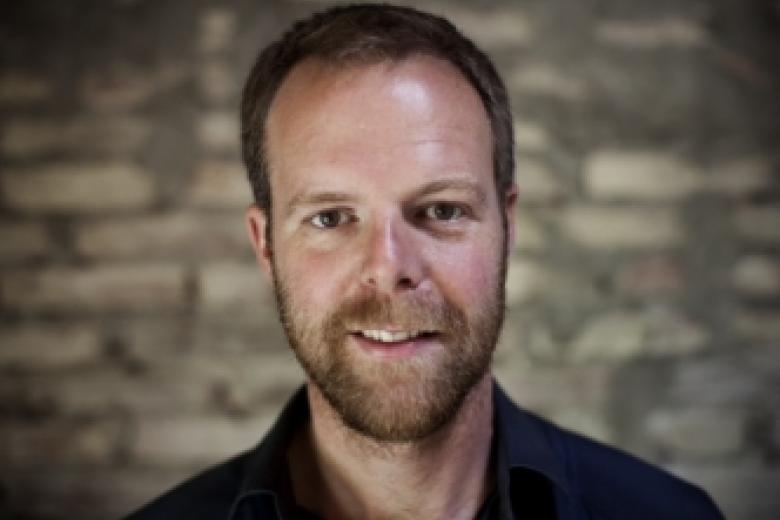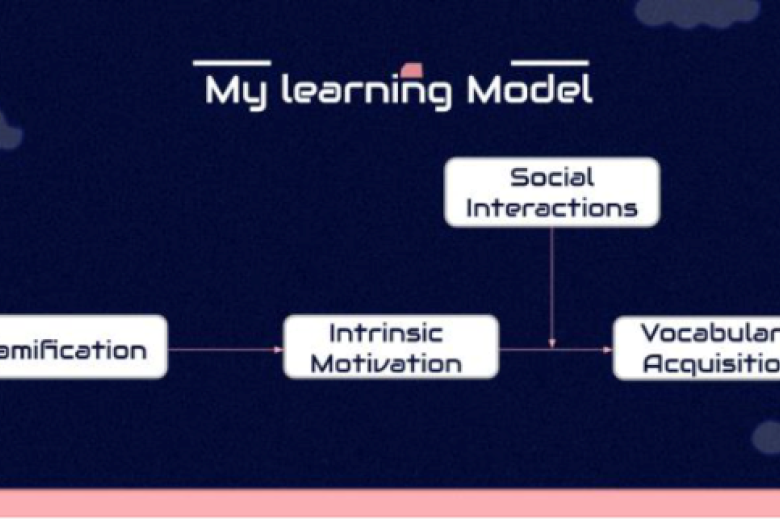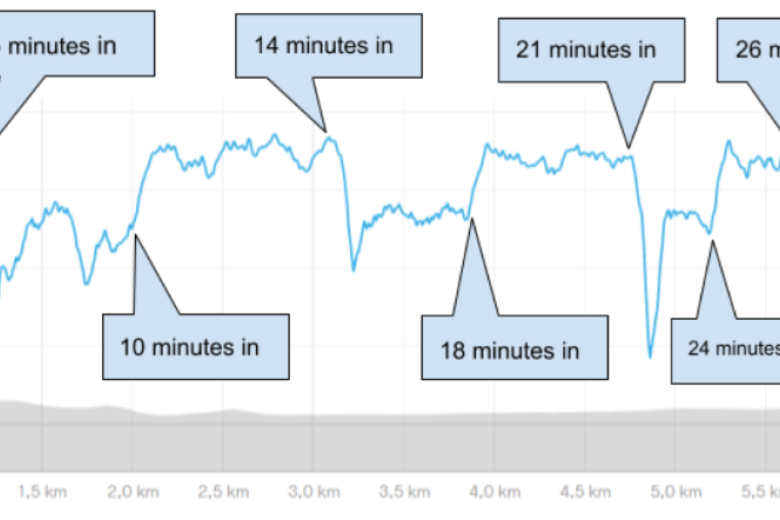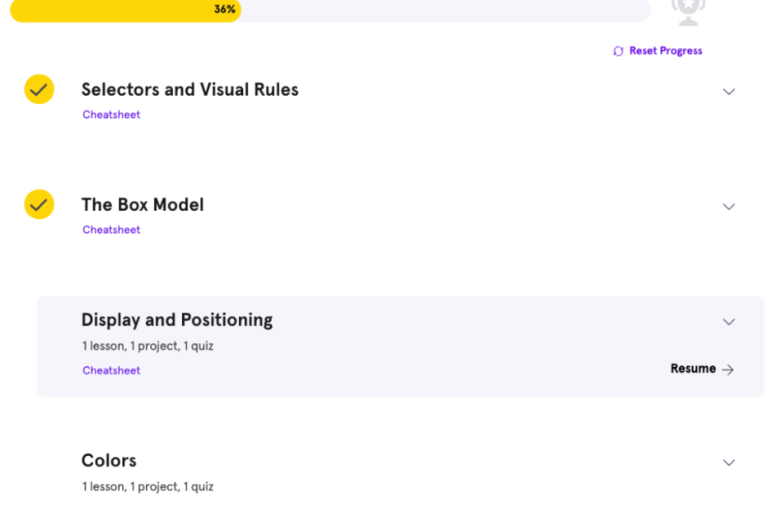How to teach students to learn how to learn? Making theory practical
As educators, we often focus on teaching our students domain-specific skills and knowledge. But the one skill that is perhaps the most valuable and transferrable of all is the ability to learn. Therese Grohnert and colleagues at the School of Business and Economics have developed a project-based approach to help their students learn how to learn in a motivating and engaging way.
By experimenting with their own learning process, and applying theories of learning to their own lives, students not only gain knowledge, but an applicable skill, preparing them for dealing with unfamiliar problems, complex challenges, or novel developments in the future.
In this article, Therese shares her experiences with this approach as well as the tools she and her colleagues have developed.
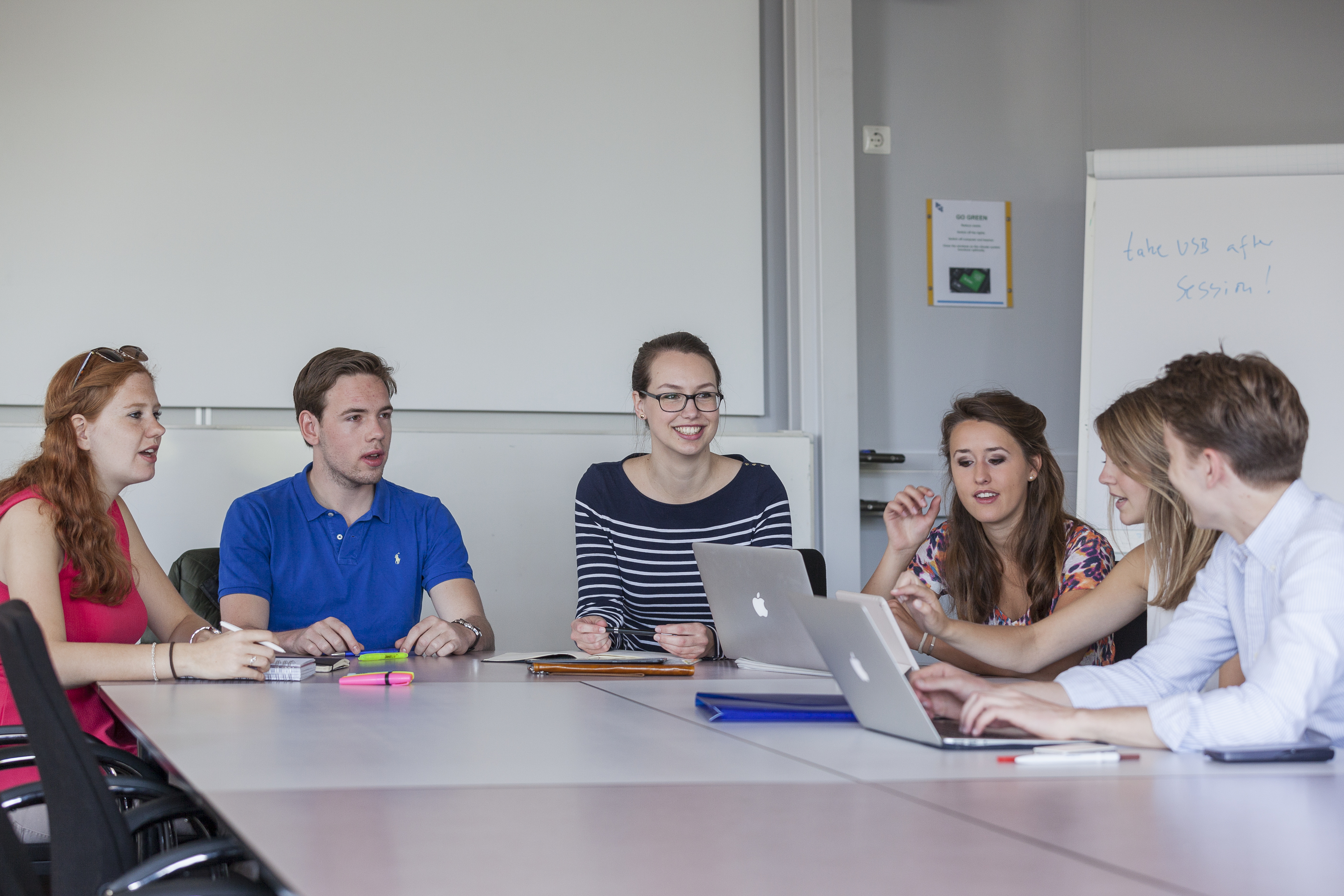
Motivating students to learn how to learn
My colleagues and I teach in the master’s programme ‘Learning & Development in Organisations’ at SBE. We see it as our role to support our students to become lifelong learners in an ever-changing world that is both unpredictable and filled with opportunities. One way to achieve this is to teach them the skills to adapt to new situations, learn from their experiences, and continuously develop their knowledge and skills.
To motivate our students to explore how learning works, we have built on Deci and Ryan’s famous self-determination theory and incorporated three key principles into our design: autonomy, competence, and relatedness. We call this the course’s ‘Learning Project’. It is integrated into a compulsory master’s level course called ‘Theories and Models of Learning’. Students learn about and apply three major learning theories in two ways: by applying them to business cases, and by experimenting with each theory themselves.
First, we prompt students in our course to choose a skill that they genuinely want to develop in the next eight weeks – we give them autonomy regarding the focus of their learning project. This can be learning a new language, programming or practising a creative skill. We encourage students to reflect on why they want to develop this skill because we have observed that students are particularly driven when they have an emotional connection to their chosen skill.
Second, we design activities to nurture our students' sense of competence. Each week, they complete a learning challenge that builds on the theories/content we explore in class. For example, in week 1, students formulate the beliefs that allow them to learn effectively. Examples can include the need to study content by heart, the idea that learning is most effective under time pressure before an exam, or that students need to be able to see the purpose of learning to sustain motivation. By week 5, they are encouraged to teach their chosen skill to a fellow student. This exercise allows them to test and revise their beliefs about learning. Each week, students assess their progress and the effectiveness of their practice, distilling what is and isn't effective for their own learning and why.
Third, we aim to create a sense of relatedness among students through their learning projects. All students work simultaneously on the same course content, and we encourage them to partner up to exchange feedback, teach skills to each other, and provide support. We also offer voluntary feedback sessions and a presentation session where students can showcase their skills and share their reflections. With the support of their tutor and classmates, they can continue their experimentation beyond the course. We also explore how to apply insights to, for example, managing their master's thesis process and interviewing potential employers to make sure they will work in an environment that will support their continuous learning.
Outline and Example of a Learning Project
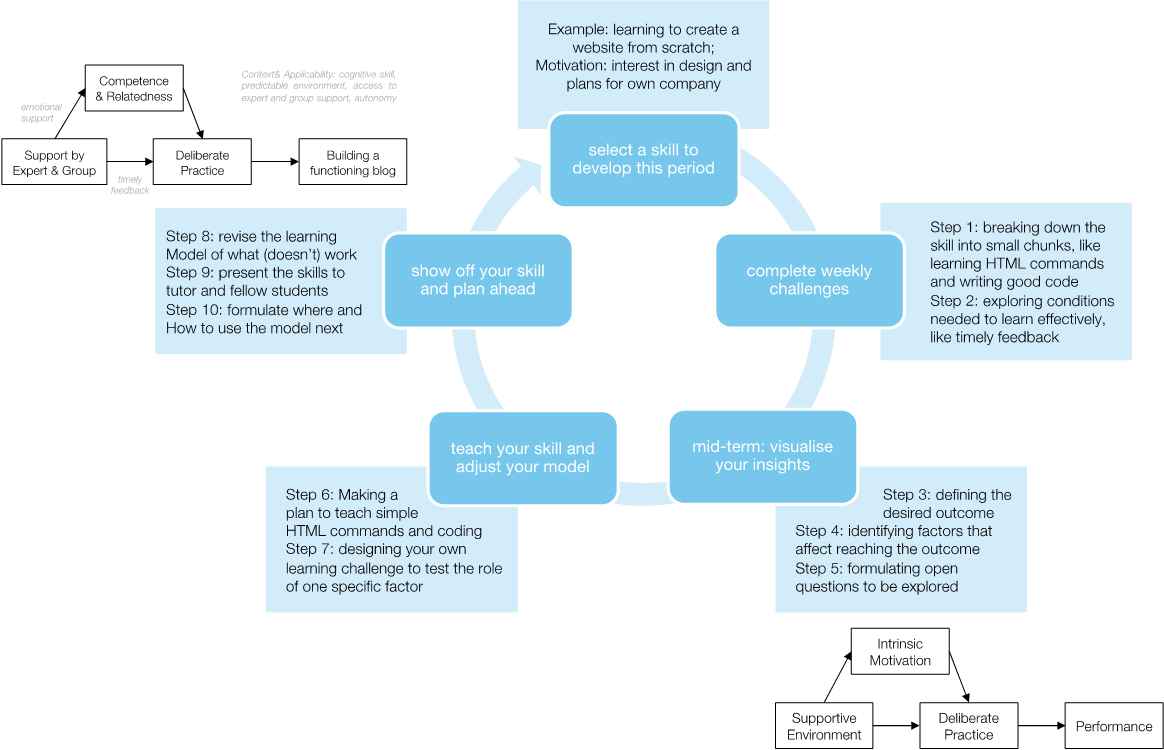
Assessing students’ learning skills
When we thought about how to assess the learning project, we first considered what we wanted our students to achieve. Our aim was to provide a supportive environment for experimentation and to encourage the application of theory to practice. This meant that assessment needed to focus on effort and application while leaving room for setbacks.
We therefore decided to assess both, the students’ process and the outcome of the project. Students need to complete each weekly challenge to pass the project, but no grades are assigned to their performance on the challenges themselves, with two exceptions. We developed two graded challenges, one in week 4 (as a mid-term) and one in the final week (as a wrap-up), that required students to relate their reflections to research in the learning sciences and to critically evaluate the validity and applicability of their learning experiences.
In addition to assessing students’ responses to the learning challenges, we ask them to write a final paper in which they focus on one key insight they gained from their own learning and compare their personal experiences to research findings. For example, students explore the non-linear effect that stress can have on their learning process, discovering beneficial and detrimental forms of stress, or explore different ways of creating intrinsic motivation for themselves, just as we did with the design of the learning project.
To assist students in this new format, we provide an interactive tool to create their paper structure and a detailed rubric to guide their reflection. On average, students use the tool twice to prepare their final paper. Since introducing it, we saw an increase in students’ synthesis of findings and their critical, evidence-based reflections.
The final assessment of the project then includes the completion of all learning challenges and grades for the mid-term and final challenges, along with the final paper, as illustrated in the figure below.
Note that all our assessment forms feed into each other and that students receive formative feedback on the underlying skills they develop at multiple moments along the way, both from their tutor and peers. This means that students do not get graded on their performance immediately but rather receive feedback that helps them understand where they stand and how they can further improve before engaging in a graded activity.
Overview of Assessment Methods and Combination
Lessons learned, tips and tricks
- In our experience, a format like the learning project might be beneficial if, in your course, you aim to make theories, concepts, or abstract relationships tangible for students and when there is a potential to link course content to students' own lives. Ask yourself: are there activities the students could carry out alone and with few resources to engage with your course content?
- To get started, we suggest breaking down course content into small units and thinking of activities that link the course content to students' personal lives. You can build on existing experiences or create a shared experience, such as learning a new skill.
- Formulate more specific, fine-grained instructions and prompts at the start of the course, and increase the complexity and decrease the level of detail over time.
- We use the following structure to formulate our weekly challenges: (I) label the theory/content that the week's challenge relates to and encourage students to formulate specific steps they can take to explore how this content/theory applies to their project this week, (II) at the end of the week, ask students to report how and how much they worked on their project, and (III) provide reflective questions to students to help them assess which elements of a theory/content are helpful to their own learning process and why.
- When crafting prompts, it's important to be as clear and specific as possible. Let students know exactly what kind of activities/reflections and how much detail you're looking for.
- We set up the project as a Canvas module. Each challenge is presented on a separate page, and we publish one page every Monday at 9 am. However, we've found that scheduled publishing can be a bit unreliable, so we suggest setting a reminder just in case. In the future, we hope to use a Canvas-based portfolio function.
- Put multiple sources and moments for feedback in place, including tutors/mentors and peers, use one-on-one and small-group opportunities, and encourage feedback-seeking across various moments.
- In the future, we see opportunities for students to use tools like ChatGPT to break down theory/content into small units and generate possible activities to experiment with these units. Due to the strong focus on personal experience and reflection, students will still need to invest significant effort to translate the content to their own situation and engage in critical reflection to complete the project.
Examples of Learning Project Outcomes
Empowering students to become lifelong learners
Having run the learning project four times now, each year, students report that they feel motivated to engage in the learning project because they get to choose their own skill to develop (autonomy), and they really value the support of their project buddy (relatedness).
Over the years, we have tweaked the weekly challenges to maximize competence as well, ensuring logical build-up of tasks, making explicit how to record and reflect on performance each week, giving students a bit more room to make the project their own each week, increasing complexity slowly.
One key lesson we learned was that to sustain students' motivation, we need to make explicit why the learning project looks the way it does, the sources of support that are available for students, and to be as transparent as possible about assessment.
At the heart of our design is the goal of empowering students to become lifelong learners in a way that is both motivating and relevant. As a team, we are always looking for ways to improve and support this mission. We believe that learning is a team sport, and we encourage you to think about how you can help your own students become competent and self-directed learners.
If you want to learn more about our approach or have ideas to share with us, please don't hesitate to get in touch! We can't wait to connect with you.
By Therese Grohnert, Wim Gijselaers, Catherine Dejardin
This article is a publication of edUMinded, the Maastricht University online magazine on Teaching & Learning.
Interested in more Teaching & Learning stories?
Also read
-
Ron Heeren appointed fellow of the Netherlands Academy of Engineering
Professor Ron Heeren, distinguished university professor at Maastricht University (UM) and director of the Maastricht MultiModal Molecular Imaging Institute (M4i), was appointed as a fellow of the Netherlands Academy of Engineering (NAE) on Thursday 11 December.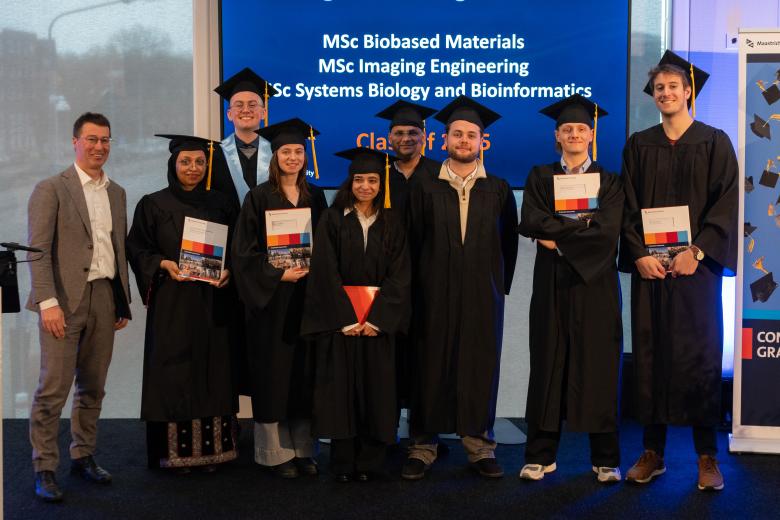
-
Mariam Aroian guest researcher at IGIR
Mariam Aroian will visit IGIR for three months, between December 2025 and February 2026. Her current research focuses on copyright and artificial intelligence. -
Christian Ernsten awarded funding for project on recurating colonial-era collections
UnRest focuses on the historically significant yet deeply contested archives and artworks associated with Robert Jacob Gordon (1743–1795) – a Dutch military officer and explorer whose documentation of the Cape region shaped European knowledge of South Africa during the 18th century